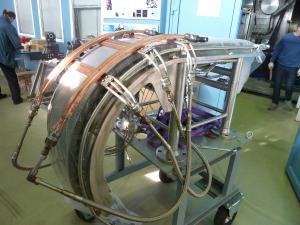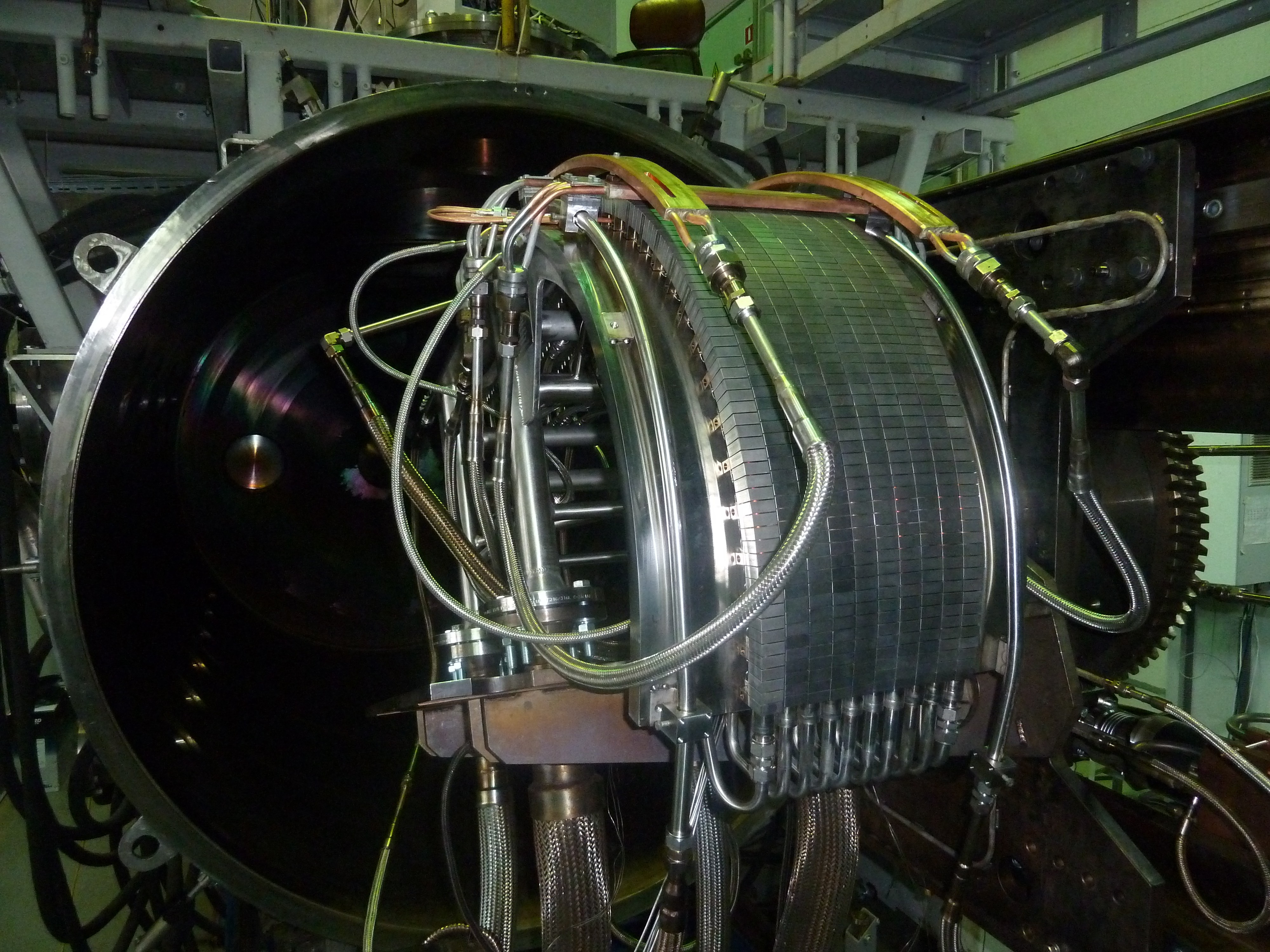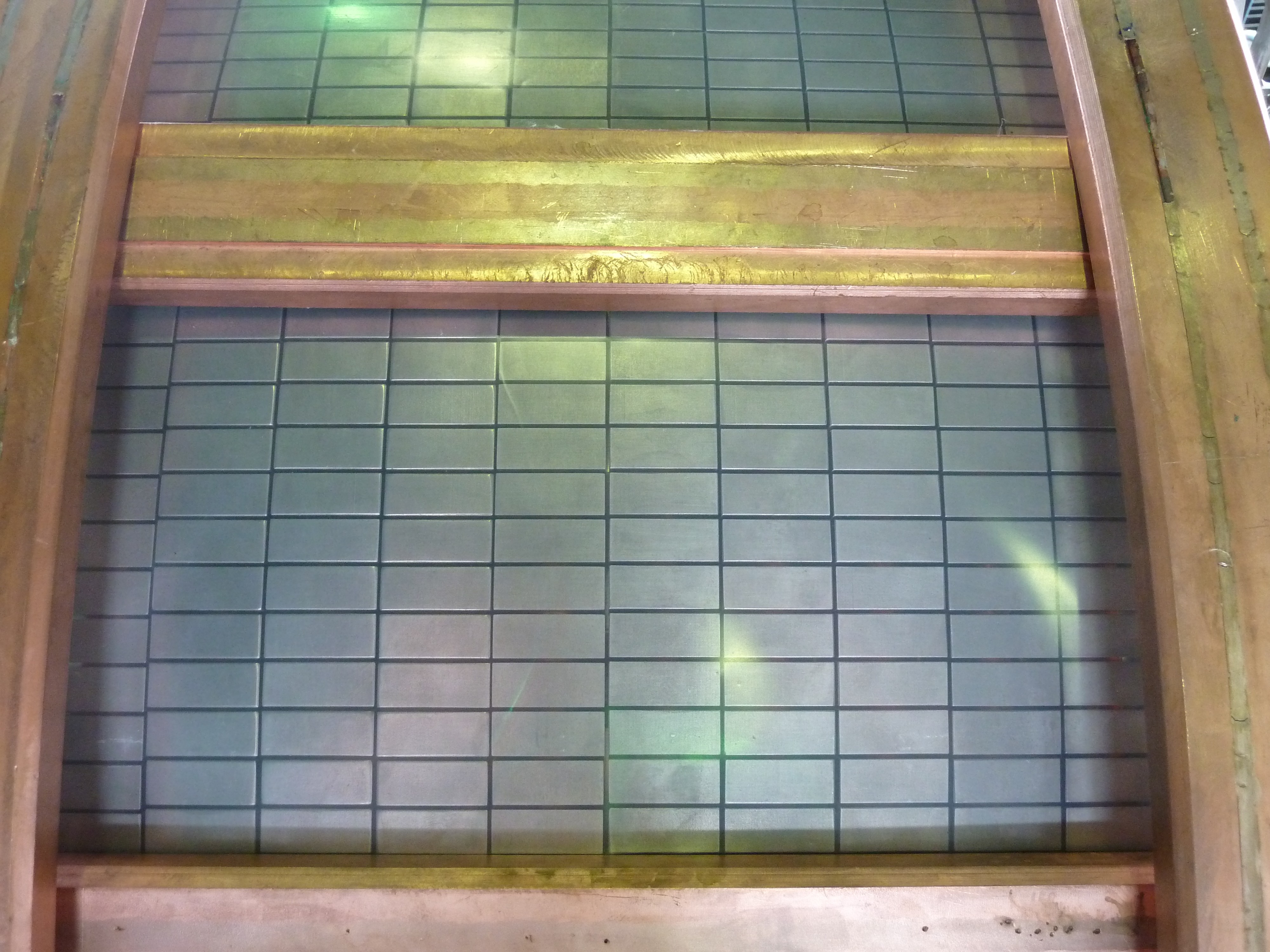High heat flux tests like these are critical to ensuring that ITER's most exposed components—the inner vertical target, outer vertical target and dome of the ITER divertor—can withstand the demanding thermal conditions of the ITER machine, estimated at 10-20 MW/m².
"To help people understand the intensity that this represents, there are two comparisons I like to use," says divertor engineer Andrey Fedosov. "On a summer day at the beach, the heat density reaching your skin is estimated at approximately 0.001 MW/m²—that's at least 10,000 times less. Or consider that 20 MW/m² is at least two times higher than the load sustained by a space shuttle re-entering Earth's atmosphere, and the aim is to sustain it in ITER during long minutes."
During a pre-qualification phase in Europe for the inner vertical target, multiple suppliers had fabricated and tested small-scale (~1/20th) mockups composed of tungsten monoblocks bonded to a copper alloy cooling tube. Now as a follow-up step, pre-qualified manufacturers are producing full-scale prototypes.
Preliminary analysis of the test results on the first prototype shows that the thermal performance of the plasma-facing units met expectations in the sense that no bonding imperfections above the acceptable threshold were observed during the long cycling experiment.
"This is a major step toward the completion of the divertor inner target qualification phase that leads to series manufacturing," says Fedosov. "All tests were completed ahead of schedule thanks to a very strong collaboration between the ITER Organization, the Russian team working at the test facility, Russian and European Domestic Agencies, and European suppliers."
Also refer to this story on the European Domestic Agency website.







